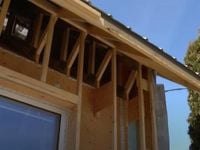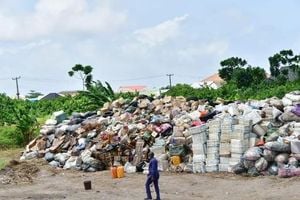On August 20, 2025, the halls of Montreal City Hall buzzed with anticipation as Mayor Valérie Plante welcomed Prime Minister Mark Carney for their first official meeting since Carney’s election in April. The encounter, which both leaders described as productive, centered on shared priorities for the city and the nation: public transportation and housing. But beneath the surface of these headline issues, another urgent matter was simmering—the future of Canada’s ambitious home retrofit loan program, a cornerstone of the federal government’s climate and affordability agenda.
According to The Canadian Press, Mayor Plante emphasized the strong rapport she’d established with Carney, highlighting their alignment on Montreal’s most pressing needs. As the prime minister spent the day in Quebec, meeting with business leaders and Premier François Legault, the federal government confirmed a major investment: Quebec would receive $557.5 million in 2025 for infrastructure through the Canada community-building fund, with nearly $84 million earmarked for Montreal itself. The funding, Plante said, would help address the city’s critical infrastructure and housing challenges—issues that have only grown in urgency as Montreal’s population and economy expand.
Yet, while infrastructure dollars are flowing, another federal initiative—the Canada Greener Homes Loan Program—is facing a financial crunch that could undermine efforts to tackle climate change and keep energy costs in check for Canadians. As reported by The Energy Mix, the Carney government is just months away from running out of funds for this signature home retrofit loan program, which has become a lifeline for homeowners seeking to make their properties more energy efficient.
Efficiency Canada, a leading advocacy group, has sounded the alarm. They warn that the $600-million top-up provided in the December 2024 Fall Economic Statement will be exhausted by mid-November 2025 if new funding isn’t secured. The program currently offers 10-year, interest-free loans ranging from $5,000 to $40,000, helping Canadians cover the costs of insulation, air sealing, new windows and doors, smart thermostats, efficient heaters, solar panels, and climate resilience improvements.
Brendan Haley, Efficiency Canada’s senior director of policy strategy, told The Energy Mix, “This loan program was part of the promise that has been made to Canadians across two different prime ministers now and on multiple occasions to ensure middle class Canadians have an opportunity to reduce their greenhouse gas emissions and energy costs.” The organization has also urged the government to turn the program into a permanent statutory commitment, arguing that both homeowners and contractors need stability—not the uncertainty of boom-and-bust funding cycles.
Recent figures underscore the program’s popularity and impact. As of June 15, 2025, the Canada Greener Homes Loan Program had committed to 115,751 loans under its $2.78-billion umbrella, with 6,052 loans consuming $155.3 million of the $600-million top-up. Loans are being approved at a brisk pace of about 3,500 per month, which Efficiency Canada says puts the program on track to run out of cash within a matter of months. The skilled trades sector, homeowners, and contractors—many of whom have built their businesses around the program—are watching anxiously, wondering if they’ll have work next year.
“The skilled trades sector is watching, homeowners are waiting, and contractors who’ve built their businesses around this program shouldn’t have to wonder if they’ll have work next year,” Efficiency Canada stated in a LinkedIn post. The organization’s pre-budget submission calls for a $4.3-billion infusion over four years to maintain and evolve the program, as well as increased funding for low-income energy efficiency under the Canada Greener Homes Affordability Program.
The stakes are high. The program has already helped boost Canada’s annual energy retrofit rate from 0.5% to 1.7% of the country’s residential building stock between 2020 and 2024—a significant leap in a sector often criticized for moving at a glacial pace. Haley noted, “It definitely shows that there’s an interest in the loan program, and I don’t think that interest should be unexpected,” especially as federal loans and grants have made retrofitting more accessible and affordable.
But there’s a sense of déjà vu here. Canada has seen popular energy efficiency programs run out of steam before. In May 2021, Efficiency Canada’s executive director Corey Diamond joined Trudeau-era ministers to announce a $10-million fund to train 2,000 new energy auditors. At the time, Diamond said, “Energy efficiency policies and investment are the right path. It’s impossible for Canada to meet its international climate commitments without reducing the amount of energy waste across the country.”
Fast-forward to February 2024, and industry insiders were warning of “massive fallout” as Natural Resources Canada prepared to wind down the Greener Homes grant program—another initiative that proved so popular it ran out of funds. The abrupt end left the home retrofit sector in chaos, with contractors facing layoffs and consumers abandoning plans to upgrade their homes. Environmental Defence Programs Director Keith Brooks told The Energy Mix, “I can’t recall another instance where the government ended a program because it was too successful and we had to ask them to renew it.”
Kai Millyard, EnerGuide service organization manager at Green Communities Canada, added, “Oh, sure, the layoffs have started. A lot of people had bookings to enrol in the program, but almost all of them cancelled because the incentive matters. It works. It makes a difference in enabling people to go ahead and do retrofitting.”
These boom-and-bust cycles, Efficiency Canada’s Haley warns, are devastating for the skilled trades and for Canada’s broader productivity. “A boom and bust cycle for a program like this is incredibly disruptive,” he said. “It can kill businesses. It can destroy the careers of the skilled trades the government says are one of its top priorities. It can reduce the productivity of our country because it creates incentives for Canadians to make unproductive decisions by chasing government support, rather than undertaking retrofits in a planned way that saves them the most energy at the lowest cost.”
With the 2025 federal election looming and the Carney government focused on business transformation, the future of the Greener Homes Loan Program is at a crossroads. Haley argues that a revamped, permanently funded program would not only help consumers and contractors, but also align perfectly with the government’s priorities on affordability, skilled trades, and innovation. “We can deliver more value for both the consumer and those skilled trade-oriented businesses, and that should really be of interest to the current government.”
As Montreal secures new federal investments for its infrastructure and housing, the fate of the Greener Homes Loan Program will reveal whether Ottawa can deliver on its climate promises—without leaving Canadians, or their contractors, out in the cold.




